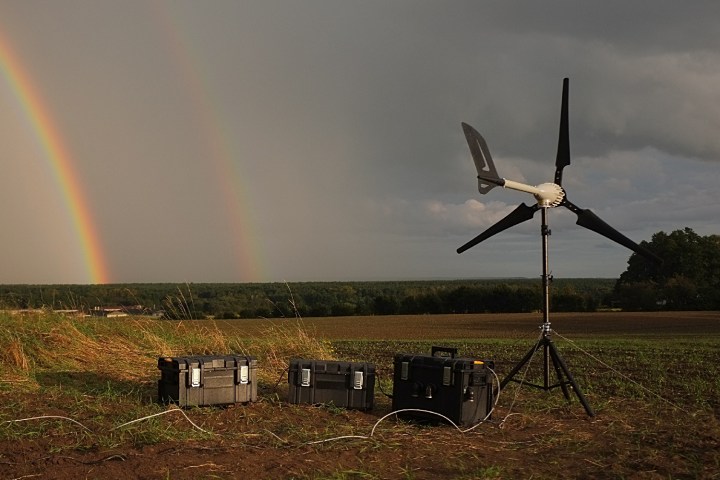
The so-called “Harvest” project involves using a small 700W wind turbine that’s attached to a robust tripod and tethered to the ground in a windy location. This charges two large interconnected 12V batteries, each in a case of their own. Drawing from those batteries is the Harvest cryptocurrency mining rig in the form of a water- and insect-proof case complete with thermal exhaust, air intakes and a lot of hardware.
“Connected to the internet via a 4G USB stick, the rig mines the cryptocurrency ZCash using a high-end GPU (Graphical Processing Unit), the rewards of which are paid into a cryptographically secured wallet over a VPN (Virtual Private Network),” Oliver told Digital Trends. “Rather than mining all alone, it does so on a ‘mining pool’, a way for individual miners to share their processing power over a network, the rewards of which are split equally based on the amount of mining work done. As the Harvest rig mines day in and out, a weather sensor and IP camera monitor the site, reporting to a publicly accessible monitoring console and dashboard. If wind speeds drop below a certain minimum, mining is paused so that the batteries aren’t drained faster than they can be charged. Then, once sufficient wind energy is available again, the miner resumes its work.”
Oliver said he first had the idea for the Harvest project back in 2013, when he realized that the costs involved with mining on grid power would soon become so expensive most would barely make ends meet unless operating on a large scale. This led to him considering using alternate sources of energy and, due to his home in Northern Europe not receiving enough regular sun to make solar viable, decided on wind energy instead. Harvest was then commissioned as a work of high tech art (currently on display in Sweden), although Oliver says the idea could also work practically.
“It’s very much my intention to see this scale right up, both as mass-produced inexpensive single nodes for scattering about the windiest parts of the world, and as ‘farms’ of such rigs that feed off pre-existent large 250W+ wind turbines,” Oliver said.


